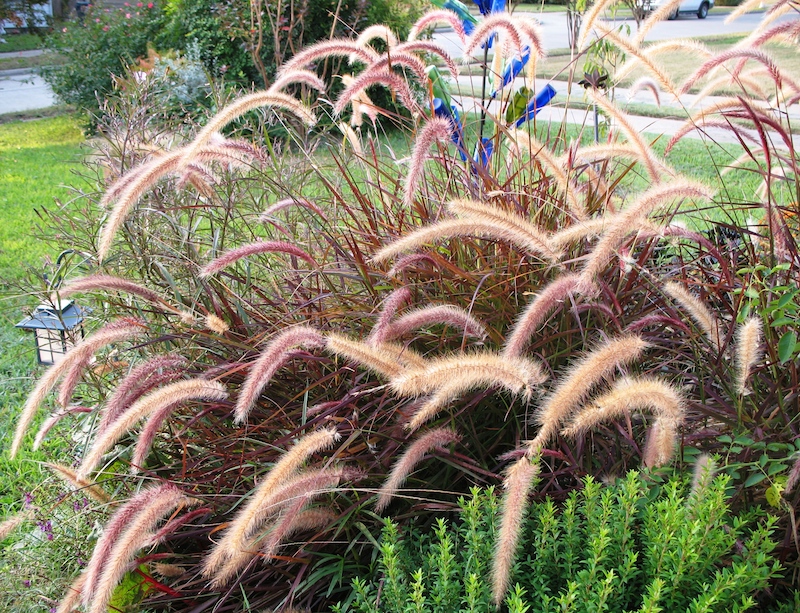Fountain Grass
Fountain Grass, Pennisetum
Fountain grass’ low-maintenance needs and graceful form make it easy to place. It softens any landscape, even in winter.

Growing
Fountain grass thrives in full sun. The soil should be of average fertility and well drained. Plants are drought tolerant once established. They may self-seed but are not troublesome. Shear back perennial selections in early spring, and divide them when they start to die out in the center.
Tips
Fountain grass can be used as an individual specimen plant or in group plantings and drifts, or it can be combined with flowering annuals, perennials, shrubs and other ornamental grasses. Annual selections are often planted in containers or beds for height and stature.
Recommended
P. alopecuroides is a popular perennial clumping species. It is one of the most reliable and showy of the ornamental selections. It bears glossy, bright green foliage 24–36" tall and wide. Cooler temperatures in fall bring out the streaked yellow and brown leaf variegations from base to tip. The foliage fades to a straw color in winter. Showy flowers emerge in summer and persist into fall. ‘Hameln’ is a dwarf variety that grows to only 24" tall.
P. setaceum (annual fountain grass) has narrow, green foliage and pinkish purple flowers that mature to gray. Its cultivar ‘Rubrum’ (red annual fountain grass) has broader, deep burgundy foliage and pinkish purple, sterile flowers. There are a number of new cultivars on the market that offer larger foliage, flowers and plant sizes.
Features: arching, fountain-like habit; silvery pink, dusty rose to purplish black foliage; white or pinkish purple flowers; winter interest
Height: 12–36"
Spread: 12–36"
Hardiness: zones 6–10 for perennial species
Notes: Both perennial and annual fountain grasses exist.


